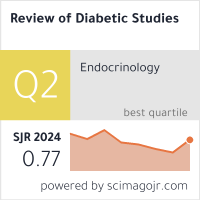Integration Of Biomedical Equipment Maintenance And Laboratory Quality Management To Enhance Diagnostic Accuracy: A Systematic Review
DOI:
https://doi.org/10.70082/mj934189Abstract
Background: Ensuring diagnostic accuracy in clinical laboratories requires not only robust analytical protocols but also an integrated approach to equipment maintenance within the laboratory quality management system (QMS). International standards like ISO 15189 emphasize equipment management as a core element of laboratory accreditation, yet the degree to which integrating maintenance programs with QMS enhances diagnostic reliability has varied in practice. We conducted a systematic review of recent literature (2015–2025) to evaluate how the integration of biomedical equipment maintenance with laboratory QMS contributes to improved diagnostic accuracy, reduced error rates, higher equipment uptime, and patient safety.
Methods: Following PRISMA guidelines, we searched PubMed, Scopus, Web of Science, and IEEE Xplore for peer-reviewed studies published from 2010 to October 2025. Search terms combined concepts of laboratory equipment maintenance, quality management (including ISO 15189, WHO-LQMS), and diagnostic accuracy or errors. We included studies that explicitly addressed equipment maintenance within a laboratory QMS and reported impacts on diagnostic performance or related outcomes. Two reviewers screened titles/abstracts and full texts against inclusion criteria. Data were extracted and synthesized qualitatively from 12 selected studies. A PRISMA flow diagram depicts the selection process.
Results: The 12 included studies encompassed diverse settings (including hospitals in Africa, Asia, and Europe) and study designs (cross-sectional analyses, quality improvement interventions, and retrospective cohort studies). Despite methodological heterogeneity, all studies reported that integrating systematic maintenance practices into the lab QMS yielded substantial quality benefits. Laboratories accredited to ISO 15189 or similar standards (which mandate equipment maintenance protocols) showed significantly lower error rates – in one 19-year analysis, labs with ISO 15189 had roughly half the rate of incorrect results compared to non-accredited labs (0.7% vs 1.4%, p<0.001). Multiple studies linked preventive maintenance and calibration programs with improved test accuracy and reliability. Proactive maintenance was also associated with increased equipment uptime and fewer interruptions in service. For example, one hospital lab reported a 78% reduction in unplanned instrument downtime after implementing routine maintenance, translating to over 100 hours of additional operational time per instrument annually(Consequences of Unplanned Downtime in the Laboratory, n.d.). Integration of maintenance into QMS contributed to patient safety by reducing diagnostic errors and delays. Several papers highlighted that well-maintained equipment produces reliable results that clinicians can trust for patient care. In resource-limited settings, introducing QMS-driven maintenance (through programs like WHO-LQMS or SLMTA) dramatically improved quality indicators: one nationwide program saw equipment management scores increase by ~5.3 points (out of 5-star rating) and a 330% rise in accredited labs over two years. However, gaps remain, including inconsistent tracking of maintenance-related errors and limited data on direct patient outcomes.
Discussion: The literature consistently indicates that integrating equipment maintenance into laboratory QMS frameworks enhances diagnostic accuracy and reliability. Preventive maintenance schedules and calibration checks embedded in quality systems help ensure the validity of results, minimizing variability as instruments age. Such integration also reduces the risk of test interruptions – equipment failures and downtime were identified as major contributors to analytical phase errors in laboratories. Quality system accreditation (ISO 15189) or stepwise quality improvement programs enforce regular maintenance, yielding measurably lower error rates and more consistent turnaround times. Patterns in the literature show a trend toward risk-based maintenance strategies and the use of data analytics (e.g. risk prioritization models, machine learning) to optimize equipment management. Nonetheless, challenges such as insufficient funding for maintenance in low-resource settings and lack of standardized maintenance metrics persist. Future research should address these gaps and quantify how maintenance-integrated QMS improvements translate to patient-level outcomes.
Conclusions: Integrating biomedical equipment maintenance into laboratory quality management systems is a cornerstone for achieving diagnostic excellence. This review found that laboratories that embrace maintenance as a quality imperative – through structured protocols, regular preventive upkeep, and continuous monitoring as part of their QMS – report greater diagnostic accuracy, reduced error rates, improved instrument uptime, and enhanced patient safety. These findings underscore the importance of international quality standards and capacity-building initiatives that marry equipment management with overall laboratory quality. Laboratories and health systems should invest in robust maintenance programs as an integral component of quality management to ensure reliable diagnostics and optimal patient care.
Downloads
Published
Issue
Section
License

This work is licensed under a Creative Commons Attribution-ShareAlike 4.0 International License.


